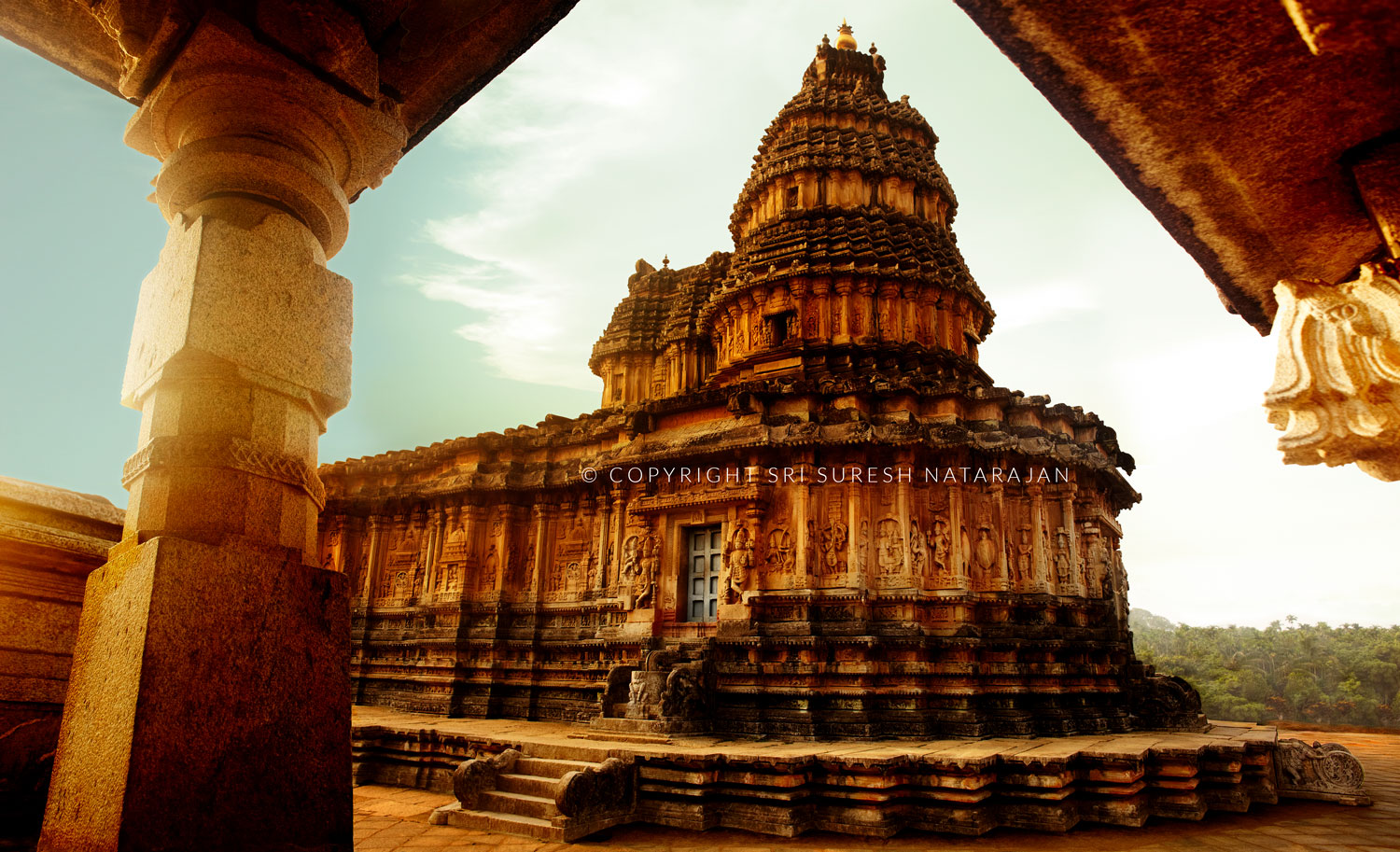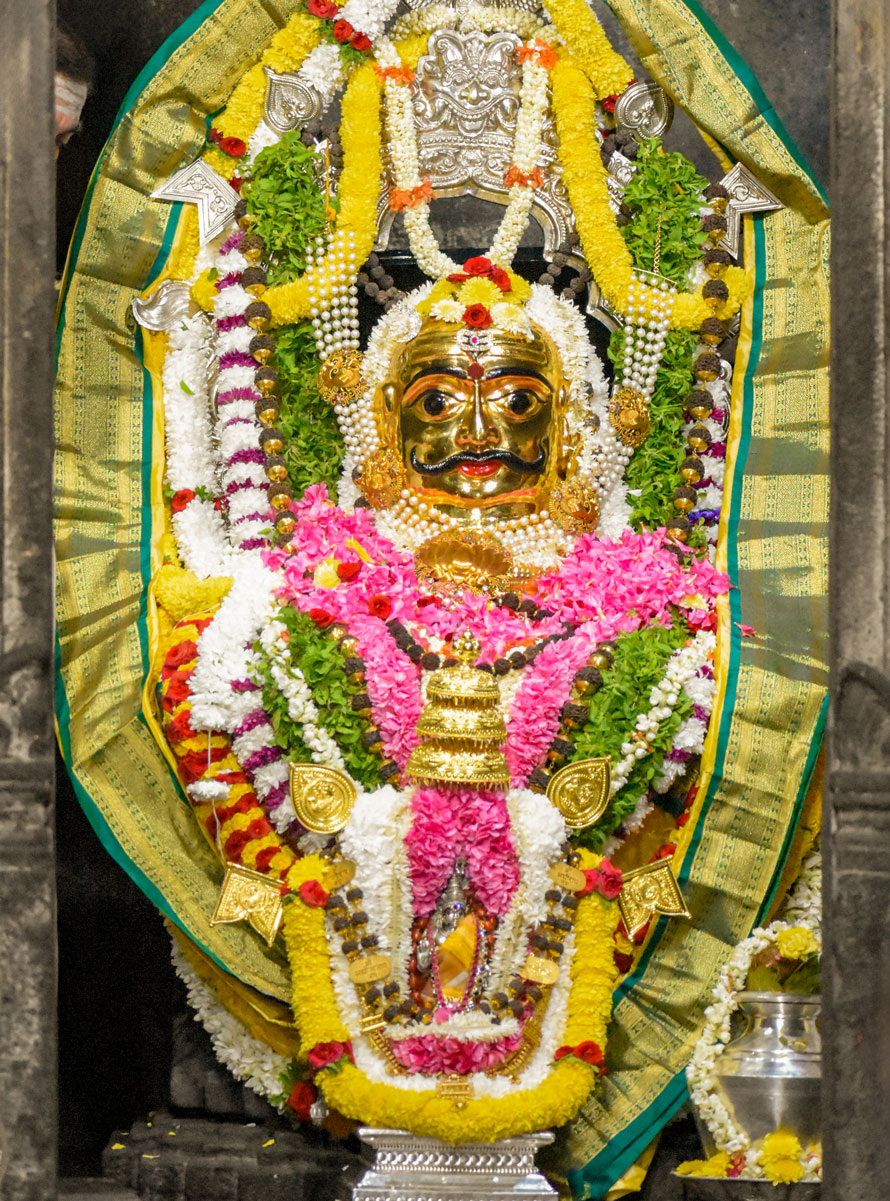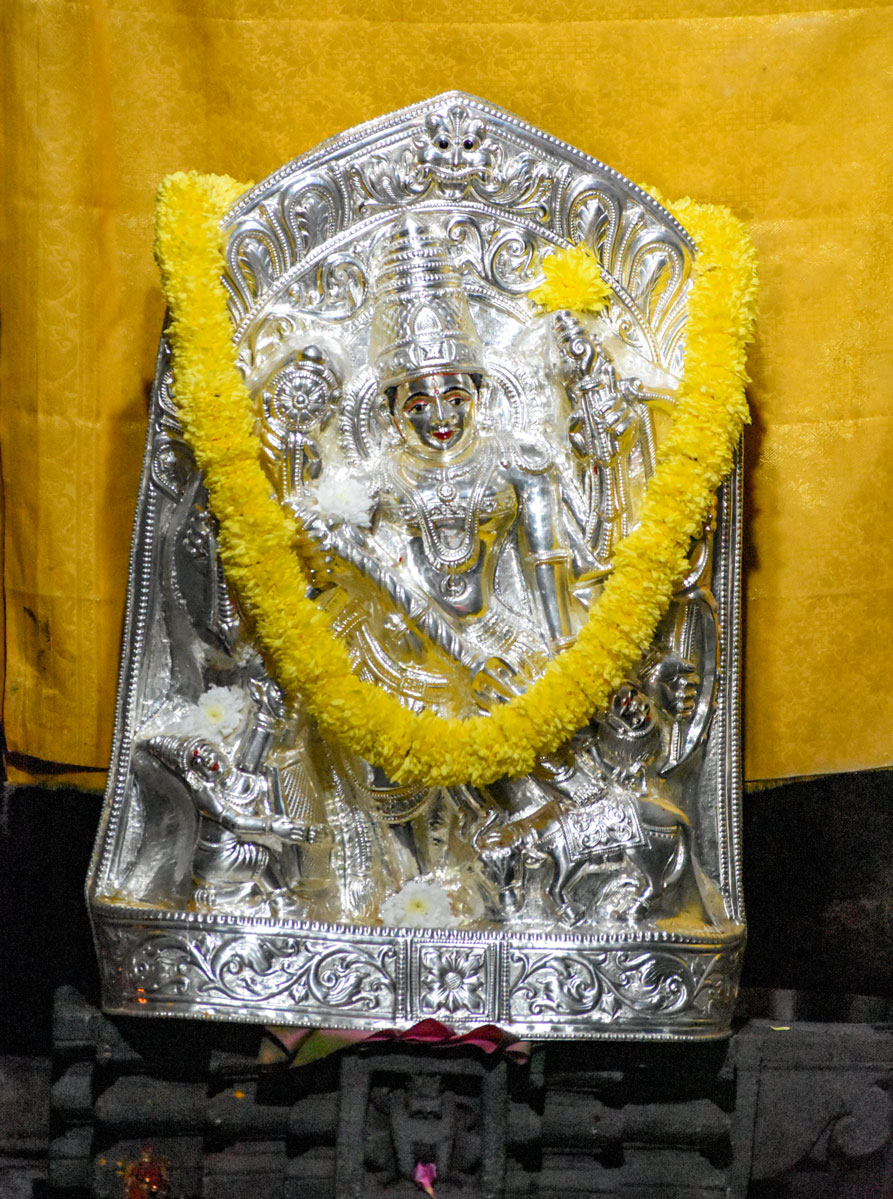Sri Vidyashankara Temple
The ancient shrine of Sri Vidyashankara at Sringeri
लम्बिकायोगनिरतं अम्बिकापतिरूपिणम् ।विद्याप्रदं नमामीशं विद्यातीर्थ महेश्वरम् ॥
The Vidyashankara Temple was built in the year 1338 A.D. It is a unique monument built entirely of stone combining both Hoysala (Chalukya) and Dravidian architectural styles. The structure stands on a high plinth and commands a magnificent view from the hills and their slopes all round. It is more or less a rectangle with apisidal east-west ends. On the western side is the Garbhagriha, with Vidya Ganapati on one side and Durga on the other side of the entrance. On the other three sides of the Garbhagriha are shrines to Brahma, Vishnu and Maheshwara with their consorts. In the eastern half of the structure is a mandapa with twelve pillars, huge monoliths carrying large figures and carrying heavy projecting corbels on top. These twelve pillars are marked by the twelve signs of the zodiac in their regular order. The central ceiling is an exquisite piece of workmanship with lotus and pecking parrots.

A view of the magnificient vimanam of Sri Vidyashankara temple
The vimana over the Garbhagriha rises magnificiently with sikhara, mahapadama and stupi. The rest of the roof is made up of sloping channelled slab. The basement is elaborately sculpted with animals, puranic stories, Siva, Vishnu, Dasavatara, Kali, Shanmukha and so on. From the caves of the corners of the central hall chains of stone rings hang which is a common feature of the Vijayanagar period.

Sri Vidyashankara Swami
To the student of Hindu iconography, this temple is a veritable store house of sculpture. The meditation of the Linga (Vidya Shankara Linga) in the sanctum and other Murtis will lead to Divine realization.
Vidyatirtha Rathotsava is celebrated on a grand scale during kartika Shukla paksha. The festival spans for seven days from Tritiya to Navami. On the Saptami day His Holiness performs special Puja. Also the Aradhana of Sri Vidya Shankara is performed on shasti, saptami and ashtami. This temple is under the care of the Archaeological Survey of India owing to its architectural marvel.

Sri Durgamba
Darshan Timings
- Morning – 7:00 AM to 1:00 PM
- Evening – 5:00 PM to 8:30 PM
Seva
The following Sevas are performed at the Shrine of Sri Vidyashankara
- Abhishekha – Ekavara, Ekadasavara and Shata Rudrabhishekha, Panchamrita
- Archana – Ashtotra
- Navagraha Pooja
For further details see seva page
Other than the above, Special Seva is performed to the following deities located at Sri Vidyashankara Temple
- Sri Durgamba
- Sri Shanaishchara
- Sri Kartaveeryajuna (Sahasrarjuna)


